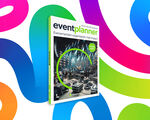Most of event planners work for event agencies or with different clients who are interested in planning and running conferences, workshops, conventions, etc. Some of these events are educational, some are for held for charity purposes, and some are viewed as great platforms for strengthening industries or communities. In most cases, the way we measure success revolves around the number of attendees, engagement level, and social media mentions.
But there’s one type of client that won’t be impressed by those KPIs. This client will be looking for more, trying to foresee the business value of the events you are offering to organize.
Who is this client? Brands, companies, and institutions that are seeking to run events as a marketing or promotion tool. Their main goals are to attract new leads, sell more products, build a community of advocates around their brand, incentivize their community of clients, and get media coverage. That’s why they’ll be looking at your event management efforts as an investment in the immediate future of their business.
According to a recent Harvard Business Review research report, “52% of survey respondents say event marketing drives more business value than other marketing channels, while only 8% say it drives less.”
The same document highlights, “Not surprisingly, corporations devote significant resources to event marketing activities, with 51% employing between one and 10 full-time event planning and management employees, and 27% employing 11 or more. One in 10 allocate more than half their marketing budget to events.” In other words, there’s a growing marketing of companies, businesses, and brands that are interested in hosting more events.
You’re probably wondering, “How do I give these clients what they need?” Well, since businesses talk the language of numbers and revenue, you should focus on a different type of indicator (thus orienting the planning strategy accordingly) that shows the event’s actual business value.
Here’s how you can do it:
Step #1. Set up the brand awareness KPIs
No matter what a company’s goals are when regarding an event, an important asset it’s looking to grow is its brand presence. From appearing in the industry media to getting more site traffic and opt-ins, there are specific metrics you’ll want to take into account. Depending on the specifics of the company you’ll be working with, you can decide which brand awareness KPIs you can use.
For example, some businesses will focus on planning an event to get media coverage. In this case, you’ll want to agree upon a specific percentage of media presence (TV reporters, bloggers, newspapers, etc.). In other cases, companies will rely on their social media profiles, expecting more audience engagement (before, during, and after the event) in the online space.
Step #2. Quantify the percentage of qualified attendees
There are two ways to plan an event. The first way is to activate the veto option and scrutinize every single person who tries to register for your event, and only accept those whose characteristics match what your brand is looking for (exciting clients versus new leads, for example).
The second way is to enable the access of everyone who’s interested in attending the event. In this case, you’ll want to quantify the percentage of qualified attendees.
Depending on the event’s goals (attracting new leads or maybe increasing the upscale percentage), you’ll provide real value to your clients by offering them data about those who attend the event and what stage they’re in on their buyer journey. You can do that by including control questions in the registration form.
Step #3. Calculate the number of warm and hot leads your event attracted
No matter what their end goal is, companies run events to build relationships with the attendees and get them to engage in a certain behavior (interact with the company brand, schedule a meeting, buy a product, etc.).
Warm leads are those people who’ll be interacting with the company brand during the event (by asking questions, looking through the materials, etc.) and agreeing upon further contact by accepting to be introduced in a database.
Hot leads, on the other hand, will take action without any previous interaction. It’s a huge benefit to the company if you, as an event professional, can provide this information during the event (via attendee tracking technology and beacons, for example).
Step #4. Monitor the event networking indicators
During the conference you are planning for a specific company, you can agree upon setting up a networking zone where brand representatives can answer questions or discuss with leads or customers.
Take full control over the interaction element. Instead of just letting people mingle with brand representatives, you can have them schedule one-on-one meetings. This will give you not only a better understanding of the attendees’ interest in connecting with the company, but also the specific questions or needs that led them to schedule a meeting in the first place.
Step #5. Include the brand's revenue growth after running the event
One of the most crucial indicators of an event’s success is revenue growth. Are more leads opting in on the company’s website? Did the sales team schedule more calls? And finally, how many deals did the brand close after the event? It’s important to assure your client that you’ll be considering this KPI.
Takeaway
Companies and brands run events to promote their services or products - they care about business value, not how many people attended the event or how many likes it got on Facebook. As a planning professional, it’s your responsibility to dig deeper, understand and present the business KPIs of the event, and actually deliver the expected results shown in the number of closed deals post-event.








